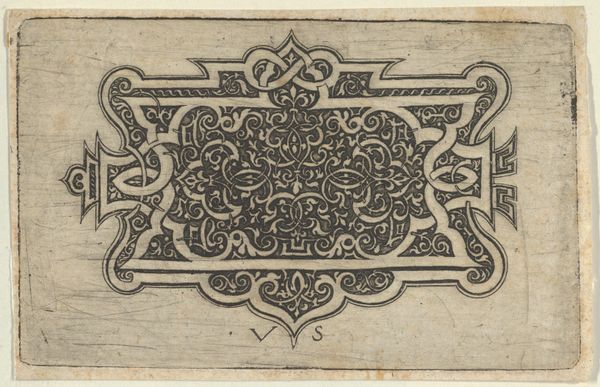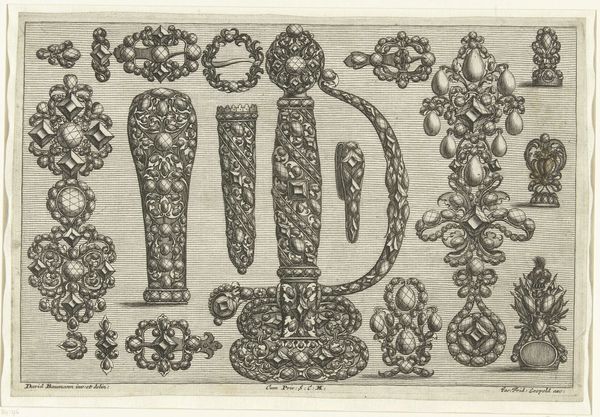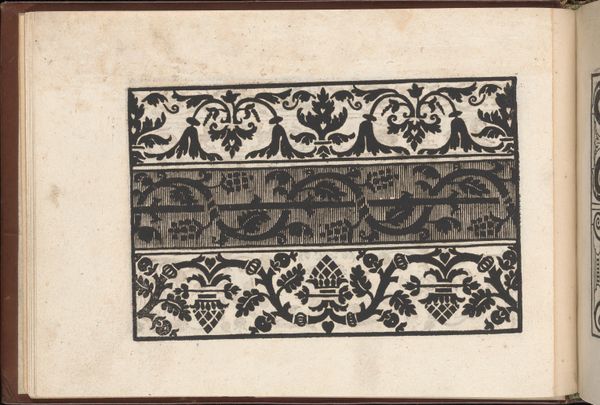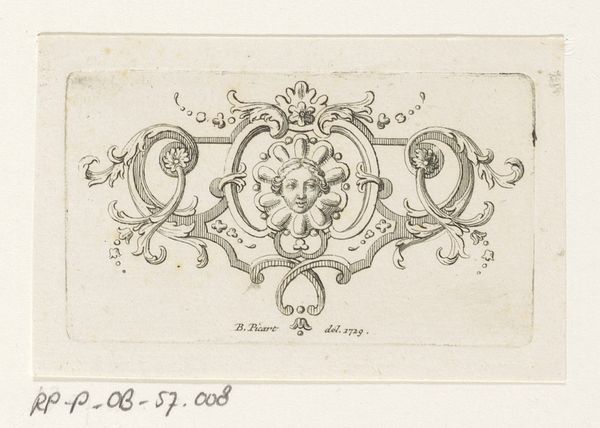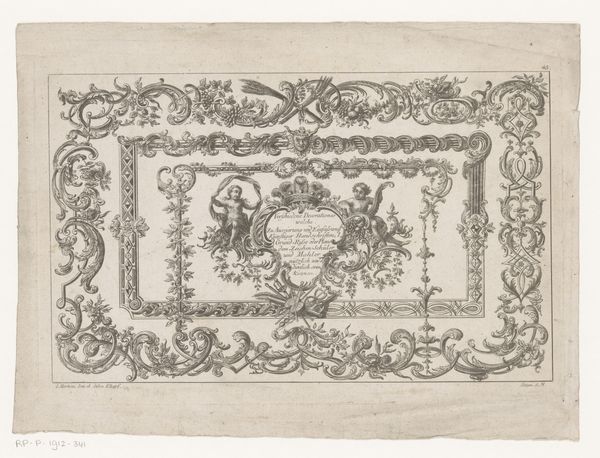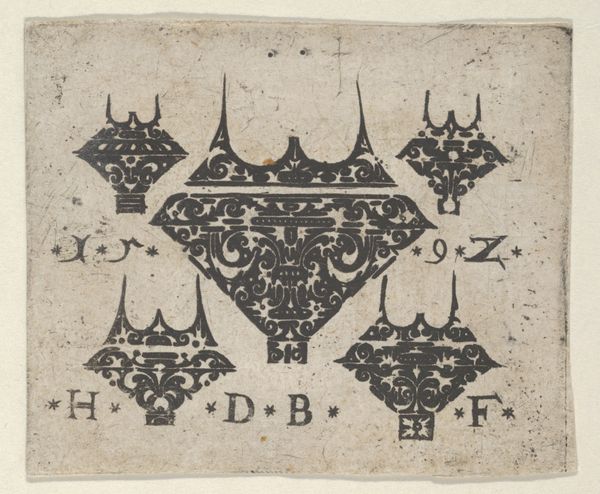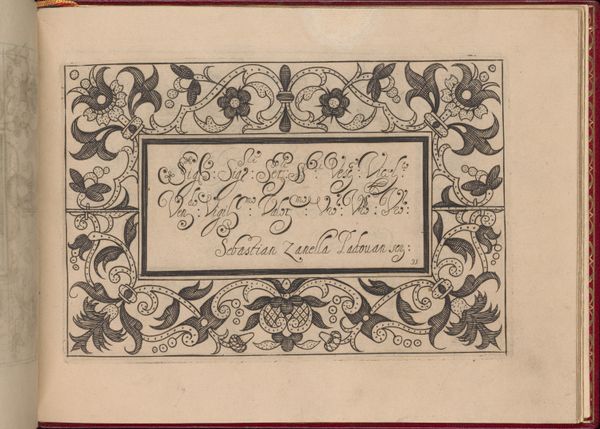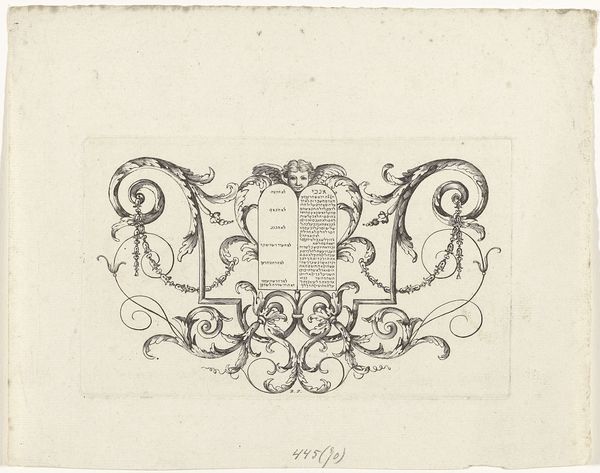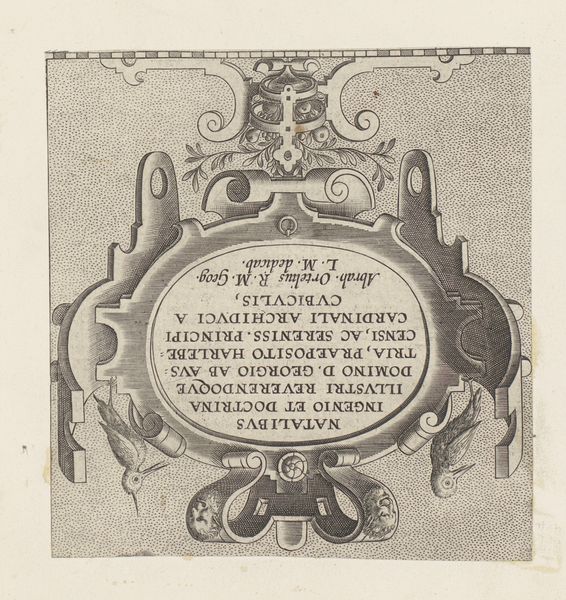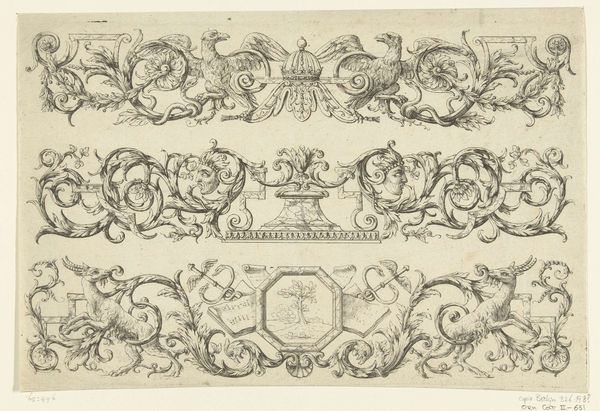
ornament, print, engraving
#
ornament
#
baroque
# print
#
old engraving style
#
personal sketchbook
#
geometric
#
decorative-art
#
engraving
#
calligraphy
Dimensions: height 43 mm, width 111 mm
Copyright: Rijks Museum: Open Domain
Editor: So, here we have "Ornament met tetragram," an anonymous engraving from somewhere between 1683 and 1733. It feels like a tiny window into another world, almost like a carefully crafted emblem. How do you interpret this work? Curator: It speaks volumes about the period's intersection of religious fervor, nascent scientific inquiry, and the politics of representation. This "tetragram," the Hebrew letters יהוה, often transliterated as YHWH, represents the name of God in Judaism. Editor: So it's more than just a decorative piece? Curator: Exactly. Placing the tetragram at the center, radiating light, within elaborate baroque ornamentation—it becomes a powerful statement about the perceived order of the universe. The decorative elements, however intricate and beautiful, are secondary to the divine name. It hints at a society grappling with how to visualize and understand the unseeable and unknowable. Editor: It’s interesting how something intended to represent divinity is presented within this very human, artistic framework. Curator: Precisely. It's about power and knowledge, encoded through visual language. Who had access to this knowledge? Who commissioned and consumed such images? Was it for personal devotion, or to signal a certain level of erudition and status? Editor: That gives me a lot to think about! It's a good reminder to consider the social context of even seemingly simple works. Curator: Indeed. Analyzing these objects allows us to uncover how faith, intellect and artistry converged. It challenges us to examine whose voices and perspectives were centered – or marginalized – in shaping cultural narratives.
Comments
No comments
Be the first to comment and join the conversation on the ultimate creative platform.

